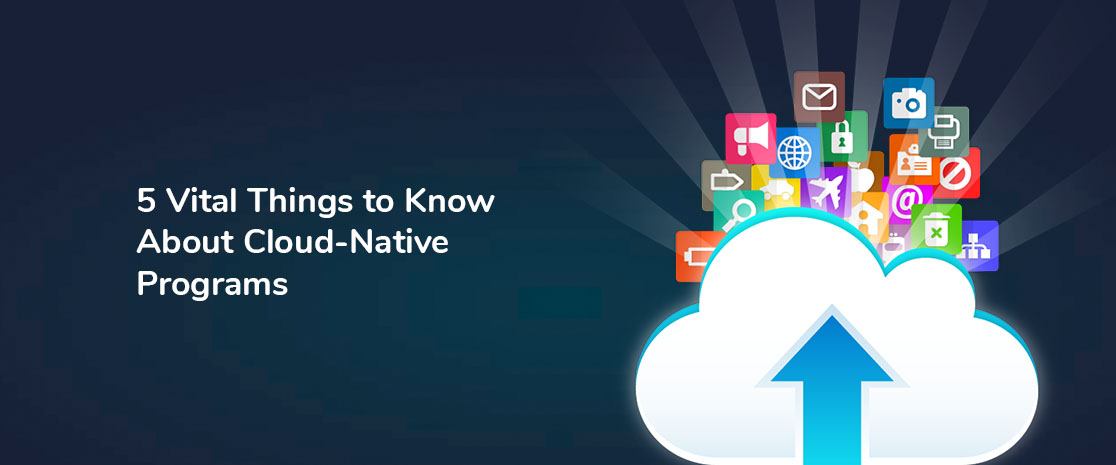5 Vital Things to Know About Cloud-Native Programs
Cloud-native programs are the new paradigm of software development. It is a new way of thinking and working towards building modern applications. It combines traditional software development and new-age services like cloud, microservices, and DevOps.
The emergence of these new software development practices has led to many changes in how we build software and applications. Cloud-native programs take advantage of the benefits of cloud computing while remaining close to the end-user.
It is a new way of building applications that takes advantage of the latest advancements in software development. Read this article to know more about the term and the importance of adopting a cloud-native program.
What is a Cloud-Native Program?
A cloud-native program is a software development model that considers the latest advancements in software development. It is a mix of new-age services with traditional software. Cloud-native programs are primarily built on microservices, a group of applications that can be delivered as a single package to its users.
These packages make delivering and managing applications easier across multiple platforms and services. They also include DevOps, which helps in delivering the application quickly. Cloud-native programs give developers the benefits of cloud computing while remaining close to the end-user or customer.
Why Is a Cloud-Native Program Needed?
Cloud-native programs are needed to reduce the complexity and cost of software development. These programs take advantage of the benefits of cloud computing while remaining close to the end-user.
Cloud-native programs are also essential for scaling applications and services, as there is no need to manage considerable resources on your own. With this program, you can quickly scale up your application and handle increasing traffic by just adding more servers. You don't have to worry about managing a single computer or server, as it is all hosted in the cloud with no maintenance required.
Cloud-native programs help you offer a seamless experience to your customers, who can access your service from anywhere they want without any downtime or restrictions. This helps improve customer satisfaction, which means you will get repeat business from satisfied customers.
Elements of a Cloud-Native Program
Three elements define a cloud-native program.
1) Cloud-native apps are written using a service-based architecture.
2) They use the services of a cloud provider to run their applications.
3) They use agile development practices and release frequently.
The three aspects of a cloud-native program are dependent on each other and make it possible for software developers to build complex, high-performing applications while maintaining flexibility and agility. It is also important to note that these three aspects are not mutually exclusive.
There can be more than one characteristic of a cloud-Native Program, such as:
1) Service-Based Architecture:
This is achieved by splitting an application into smaller components that work like microservices to provide better scalability and fault tolerance. These components can be written in different languages, making it easier for programmers to switch between programming languages depending on the particular context of the application.
The most common example is having written your code in Java programming language but your application communicating with the database language of SQL or MySQL.
2) Cloud Provider:
This refers to the use of services provided by third-party providers, such as Amazon Web Services (AWS), Microsoft Azure, ogle Cloud Platform (GCP), etc., instead of developing your proprietary software solutions or using Microsoft Windows or Linux operating system as they have their drawbacks and limitations when compared to a third-party provider like AWS or GCP which is quite very powerful.
Key Differences Between a Cloud-Native and Traditional Program
There are a few key differences between a cloud-native program and traditional software development.
The first difference is that there is a shift in the way applications are built. This shift takes place because of the availability of cloud-native programming practices like microservices and DevOps.
Another difference is that cloud-native programs focus on building apps with interfaces that perform well and scale efficiently.
Lastly, cloud-native programs are more agile than traditional software development. These new practices allow developers to iterate quickly on features without waiting for lengthy project approval processes.
Is Cloud Native worth it?
It depends. Many companies are finding that the benefits of cloud-native programs outweigh their costs.
One restaurant chain company found that with cloud-native programs, they could reduce the cost of software development by more than 50 percent.
There are many advantages associated with using cloud-native programs.
It can also lead to better customer service and increased innovation within your business. It helps you build applications much faster and reduces your dependency on IT resources. Cloud-native programs are now a standard in the software development industry, and it has become essential for businesses to have one.



Comments (0)